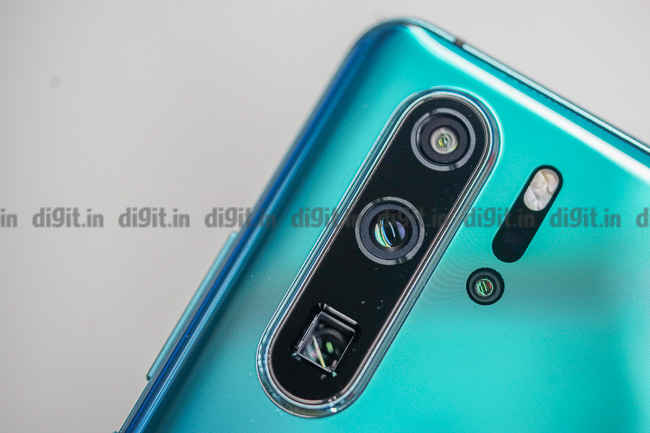Which Camera is right for you? Decoding Megapixels, number of cameras and softwares

The imaging sensors of today are far bigger than ones that came before
When choosing a smartphone camera, pick one where the sensor is natively capable of pixel binning
Some smartphones will offer ultra-wide lenses while some will give you telephoto lens in addition to the regular lens
Smartphone cameras have fast replaced bigger point and shoot and for some, even more, professional cameras altogether. Yes, some smartphone cameras are that good, but even if you see camera specs on paper that does nothing but impress, just know that all that glitters may not be gold. Here’s a quick guide that will walk you through all the important aspects of camera setup and what to look for in a smartphone camera.
Single, Dual, Triple and Quad Camera Setup
Last but not the least, we’ve got the multiple lens setup. While smartphone cameras may not allow you to change lenses, some of them come with multiple lenses that offer a different perspective on the world. Some smartphones will offer ultra-wide lenses while some will give you a telephoto lens in addition to the regular lens. There are also a lot of smartphones that sport a triple camera setup, but the third camera is only a depth sensor. Depth sensors do not actually produce any images themselves, but instead, only pick up depth information to augment the bokeh in photos. More often than not, the impact of the depth sensor is so minute in comparison to what can be achieved through software. We recommend choosing a phone that has wide, ultra-wide and telephoto lenses and treat the depth sensor as the least important out of the these.
Dual, triple and even Quad camera setups are the rage these days
Zoom vs. Optical Zoom vs. Hybrid Zoom
One of the biggest drawbacks of smartphone cameras used to be that you could not zoom. However, now smartphone cameras offer a secondary camera with a lens that offers a zoomed-in view, usually denoted by a factor of X. We still can't call these zoom lenses in the purest sense since its not one lens going from one focal length to another, but the smartphone actually changing lenses to give you that zoomed-in view. Now if a camera manufacturer says their camera offers "2x zoom," you know what they mean is that the secondary lens lets you get twice as close. Manufacturers offer anywhere between 2x to 5x optical zoom on their smartphones. For those who want to go even farther, some smartphones offer something called Hybrid Zoom, which combines data from the multiple cameras on the smartphone into one image that has a higher than normal zoom factor. So in a way, the hybrid zoom is better than digital zoom because digital zoom simply crops into the image, causing severe quality loss, while hybrid zoom will typically utilise the super high-resolution main sensor AND the other cameras to combine all the information to improve the quality of the output.
Shot at 1x
Shot at 5x optical zoom
Shot at 10x hybrid zoom
Resolution
There was a time when more megapixels was bad, but now we live in a time when more is good again. This is simply because unlike yester-years, where manufacturers packed more and more pixels into a tiny sensor, the imaging sensors of today are far bigger. Think of the relationship between megapixels and sensor size like that between the number of guests you invite for dinner vs. the size of your dining table. The table can seat 6 people comfortably, but if you tried to fit 10, there would be chaos. However, make the table bigger than those 10 people will have enough room to manoeuvre their cutlery. So yes, more megapixels are fine, as long as the sensor size is bigger too. This is why the 48-megapixel sensors we see nowadays are able to produce such good images because these are half-inch sensors. However, they use one more trick to make things look better.
Pixel Binning
Pixel binning is the science of combining information from four adjacent pixels on a sensor, into one, super-pixel of sorts. By utilising this trick, sensors are able to boost the quality of the final output significantly. This is how the 48-megapixel sensors are able to produce such stellar images. They combine 4 pixels into 1, thus reducing the final resolution to just 12MP, but bringing some eye-popping clarity, dynamic range and colours to your image. When choosing a smartphone camera, pick one where the sensor is natively capable of pixel binning.
How pixel binning works
Aperture
Now, no amount of software and hardware magic can get around one fundamental rule of physics that you need light to create a photo. The aperture is the opening in the lens that determines the quantity of light that the sensor receives in any given duration of time. The bigger this opening (aperture), the more light the sensor can gather in an instant and hence, the better images it can produce. A bigger aperture is especially helpful in capturing well-lit photos in low light. The aperture of a lens is written as a fraction, example, f/1.2, f/2.0, f/4.0. Therefore, the smaller the number, the bigger the aperture will be. For example, f/1.5 is bigger than f/1.8 is bigger than f/2.0.
Make the right combination of choices when it comes to the above factors and you are almost guaranteed to end up with a smartphone camera that would easily take stunning photos in almost all situations.
Swapnil Mathur
Swapnil was Digit's resident camera nerd, (un)official product photographer and the Reviews Editor. Swapnil has moved-on to newer challenges. For any communication related to his stories, please mail us using the email id given here. View Full Profile









